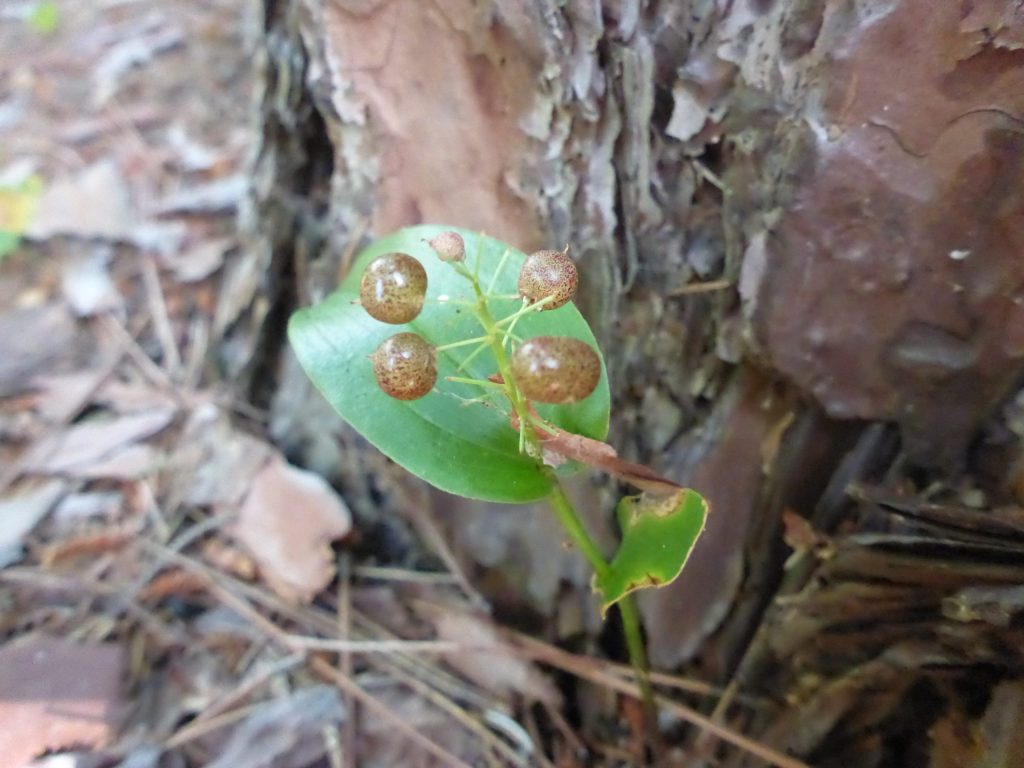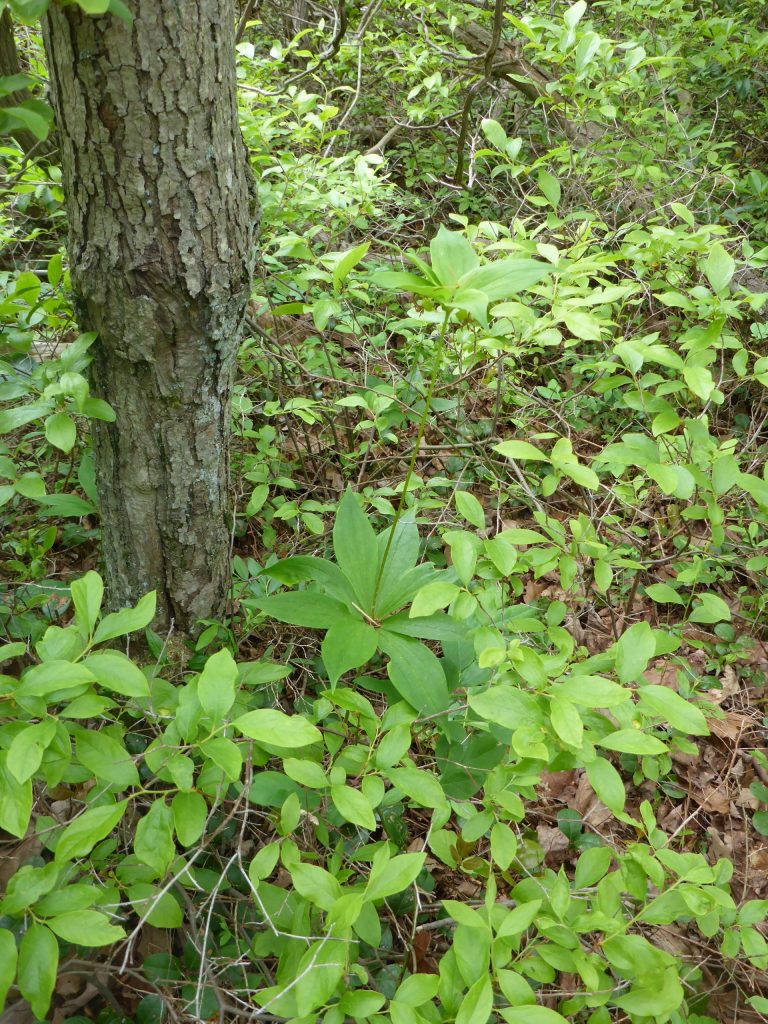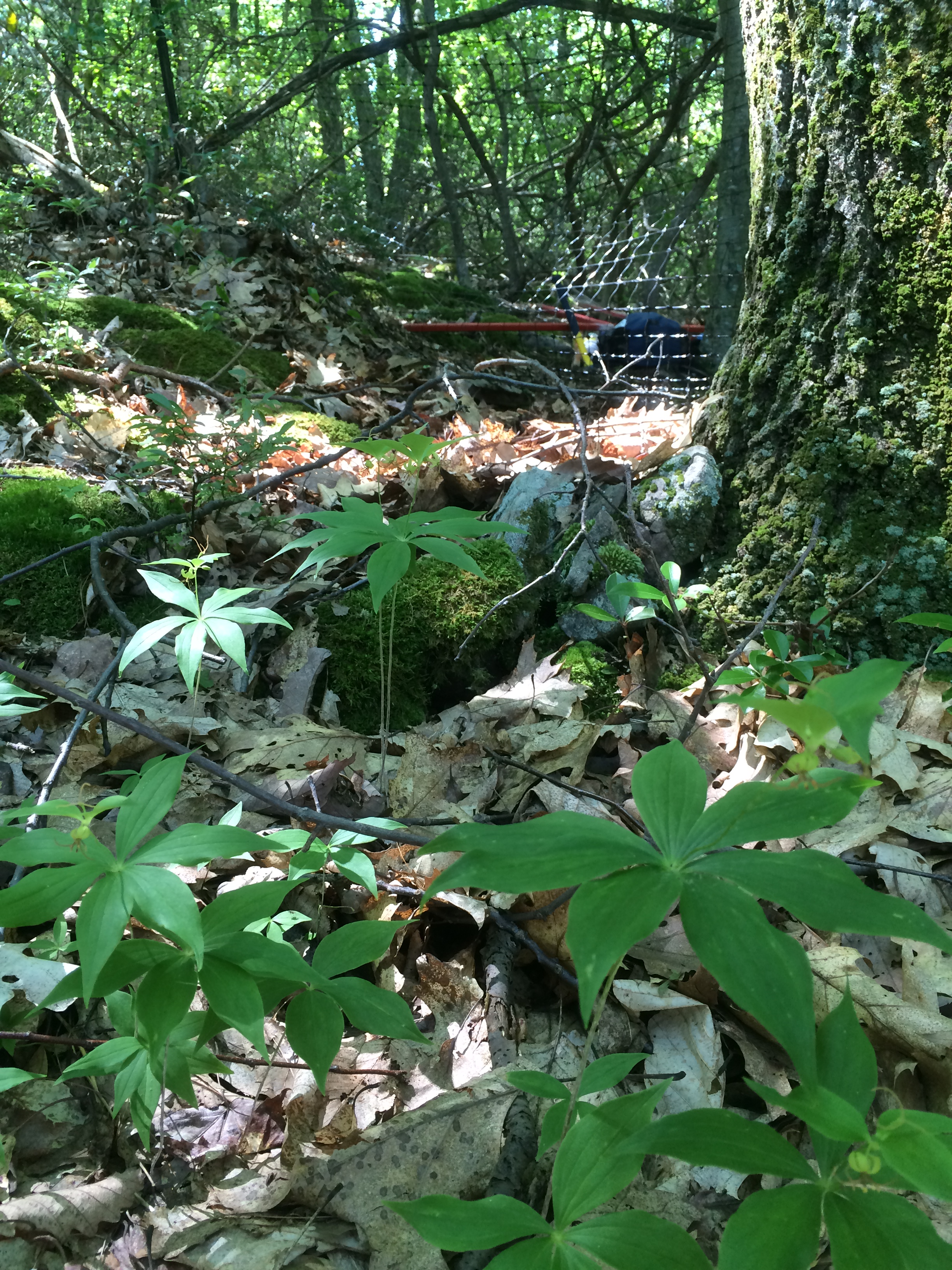Eating low on the food chain is good for your health and the environment. Filling your plate with fruits and veggies is the way to go according to USDA. The endless variety plants have to offer is one of my favorite food adventures. Eggplant ratatouille – Yum! Black bean burger – Sure! Farro salad – Bring it on!
If you have ever used one of those food tracking apps, you know that nutritional content of a banana or an apple or an eggplant is standard. A banana is a banana is a banana. But what if that isn’t true? What if Ecuadorian bananas had a different nutrient profile than Costa Rican bananas?

Indian cucumber root (Medeola virginiana) and Canada mayflower (Maianthemum canadense) are two northern Appalachian spring forbs that are preferred by white-tailed deer. Forbs make up 36-75% of a deer’s spring diet. Canada mayflower can make up to a quarter of their spring diet! The Deer-Forest Study, led by graduate student Nico Navarro, recently published research focusing on plant chemistry of these 2 important deer foods from 2 ecological sites – Deep soil, high slope, northern hardwood forests (the Big Woods of northcentral PA) and Dry, upland, oak–maple–hemlock hardwood forests (the Ridge and Valley Region of PA).

Forbs like Indian cucumber root and Canada mayflower are important components of a deer’s diet because they are higher in phosphorus (P) and potassium (K) which are essential nutrients for ungulates. We talked about the importance of minerals like manganese, phosphorous, and calcium before and their role in antler and fetal growth. But when it comes to understanding the mineral needs of deer, we have only scratched the surface. These elements play a role in nearly every aspect of metabolism.
Does a deer eating “cucumbers” in northern hardwood forests get the same amount of P as a deer eating them in oak maple hemlock forests? No! Potassium, manganese, magnesium, phosphorus, and iron all varied based on site and species. Canada mayflower growing in northern hardwood sites contained more potassium and manganese than those growing in oak hickory sites. Indian cucumber root contained more manganese and magnesium and less potassium and phosphorus in northern hardwood sites than oak hickory sites.
So a banana is not a banana!
If you are using the presence and abundance of a plant species to evaluate habitat for deer or other wildlife, then you also need to consider the soils in which it grows. Nutritional quantity of diet determines carrying capacity and population productivity – important factors when managing deer.
Deer may be packing their plates with Indian cucumber root and Canada mayflowers but the punch those plants provide may not be the same everywhere. Which just reinforces how complex and interconnected the system is.
–Jeannine Fleegle
